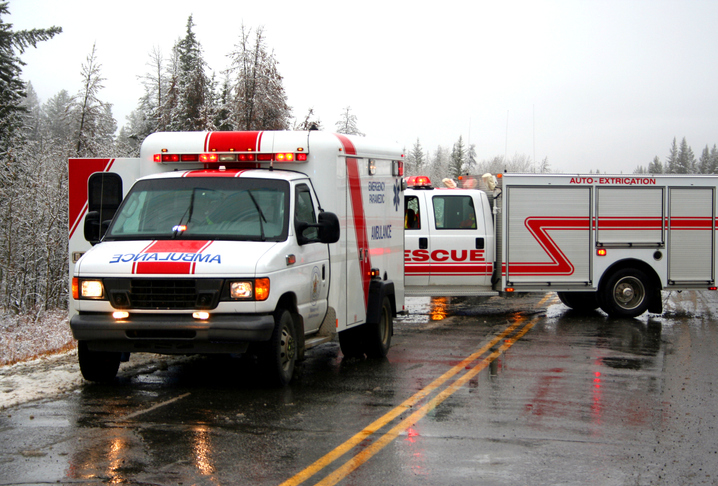Harnessing AI-Powered Telematics for Improved Emergency Response
AI holds immense potential to further enhance the capabilities of telematics solutions already being used for numerous applications including fleet services, field services, construction, and agriculture. By using AI-powered telematics solutions, emergency services can enhance their operational capacities and response times, ultimately saving lives.
AI-powered telematics in emergency response provides real-time data analysis, predictive modeling, and automated decision-making. This technology can help emergency services optimize their resources, improve situational awareness, and enhance coordination and communication among first responders. With AI-powered telematics, emergency response teams can gain valuable insights, make data-driven decisions, and respond more effectively to emergencies.
The Role and Benefits of AI to Improve Emergency Response
AI plays a crucial role in enhancing emergency response in several ways. AI can analyze vast amounts of data in real-time, allowing emergency services to quickly identify patterns and make informed decisions. For example, AI-powered telematics can analyze data from various sources, such as traffic cameras, weather sensors, and social media, to predict potential emergency situations and allocate resources accordingly.
Additionally, AI-powered telematics enables emergency services to track the real-time location and status of their vehicles and personnel, ensuring efficient deployment and coordination. AI also optimizes response routes by considering real-time traffic conditions, reducing response times, and improving the overall effectiveness of emergency operations.
Challenges of Implementing AI-Powered Telematics in Emergency Services
While AI-powered telematics holds great potential for improving emergency response, there are several challenges that need to be addressed as outlined below:
Telematics solutions need to be integrated into existing emergency services processes and procedures which may present challenges in compatibility and interoperability with legacy systems. Close collaboration among key stakeholders is crucial to integrate these systems to ensure smooth data exchange. Comprehensive testing will also be essential to verify functionality before completing a full roll-out.
Additionally, the implementation of telematics requires an investment in telematics solutions with AI-powered dashcams and training. Emergency services must allocate resources to upgrade their existing systems and provide training to personnel to effectively utilize AI-powered technologies. This investment may be a barrier for some emergency services, particularly those with limited budgets.
Future Developments and Advancements
The future of AI-powered telematics in emergency response holds promising advancements. One area of development is the use of machine learning algorithms to improve predictive modeling. By analyzing historical data and patterns, AI algorithms can better anticipate emergency situations, allowing emergency services to proactively allocate resources and prepare for potential incidents. Refer to our blog, “Exploring the Power of AI Algorithms in Telematics: Enhancing Efficiency and Safety,” for additional information on AI algorithms.
Additionally, advancements in Natural Language Processing (NLP) and Voice Recognition technologies can enhance communication between emergency services and callers. AI-powered systems can transcribe and analyze emergency calls, extracting relevant information and categorizing the urgency and severity of the situation. This automated analysis can help prioritize emergency calls and ensure a faster response. Refer to our blog, “Decoding the Future: Natural Language Processing’s Role in Advancing IoT Applications,” for additional NLP information.
While not related to telematics solutions, another advancement is the integration of AI-powered chatbots and virtual assistants into emergency response systems. These chatbots can provide real-time information, instructions, and support to callers during emergency situations. By automating certain tasks, such as providing CPR instructions or assessing the severity of injuries, chatbots can assist emergency services in handling a larger volume of calls and providing timely assistance.
Conclusion
AI-powered telematics solutions have great potential for emergency services providers. Their adoption can significantly enhance operational capabilities, streamline response times, and ultimately, contribute to life-saving outcomes. By leveraging real-time data analysis, predictive modeling, and automated decision-making, emergency services providers can optimize their resources, enhance situational awareness, and improve coordination among first responders.
While challenges like systems integration and budget constraints must be addressed, the future of leveraging AI for emergency response holds great promise. Continued advancements in predictive modeling, AI algorithms, and NLP are poised to further elevate the effectiveness and efficiency of emergency services through AI-powered telematics solutions, ushering in a new era of safety and responsiveness for emergency response.
About Positioning Universal
Established in 2013, Positioning Universal is the leading global provider of off-the-shelf and customizable IoT devices, along with GPS-based monitoring solutions for vehicles and assets. Our Systems Integration (SI) services deliver turn-key solutions for smooth IoT implementations, leveraging our team’s extensive industry knowledge.
With a deep understanding of IoT technologies, we guide companies in designing and deploying IoT solutions that meet their unique needs. Our comprehensive offerings, paired with best-in-class customer support, empower businesses with essential business intelligence to sustain a competitive edge in rapidly evolving markets.
Positioning Universal’s AI-Powered Dashcams
Driven by a real-time high-performance edge processing GPU, our AI-powered dashcams can actively monitor up to 5 cameras simultaneously. This includes detecting triggerable events such as alerting the driver about pedestrians, unsafe driving by other vehicles, and much more. Telematics solutions using AI-powered dashcams with edge processing contribute to driver and public safety by capturing real-time footage and alerting drivers of potential hazards. With our cutting-edge technology, we are committed to fostering a safer driving environment and providing invaluable guidance and alerts in critical moments on the road.



